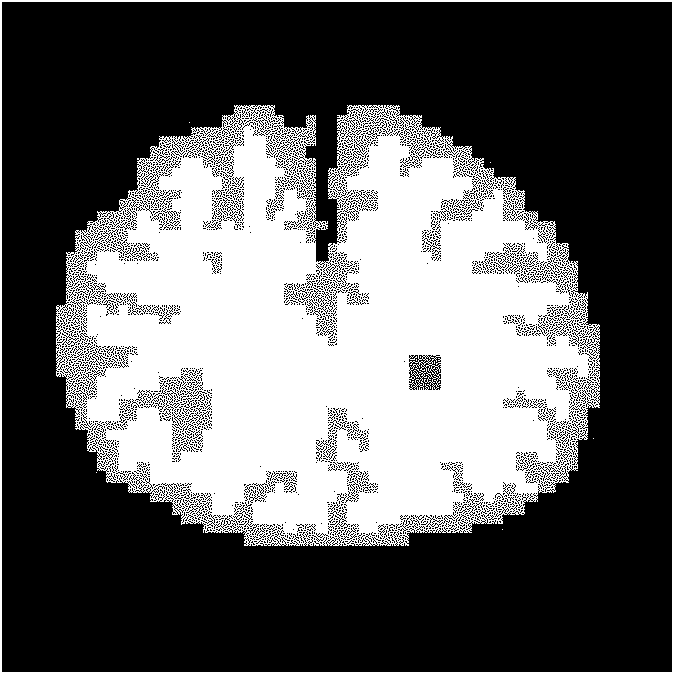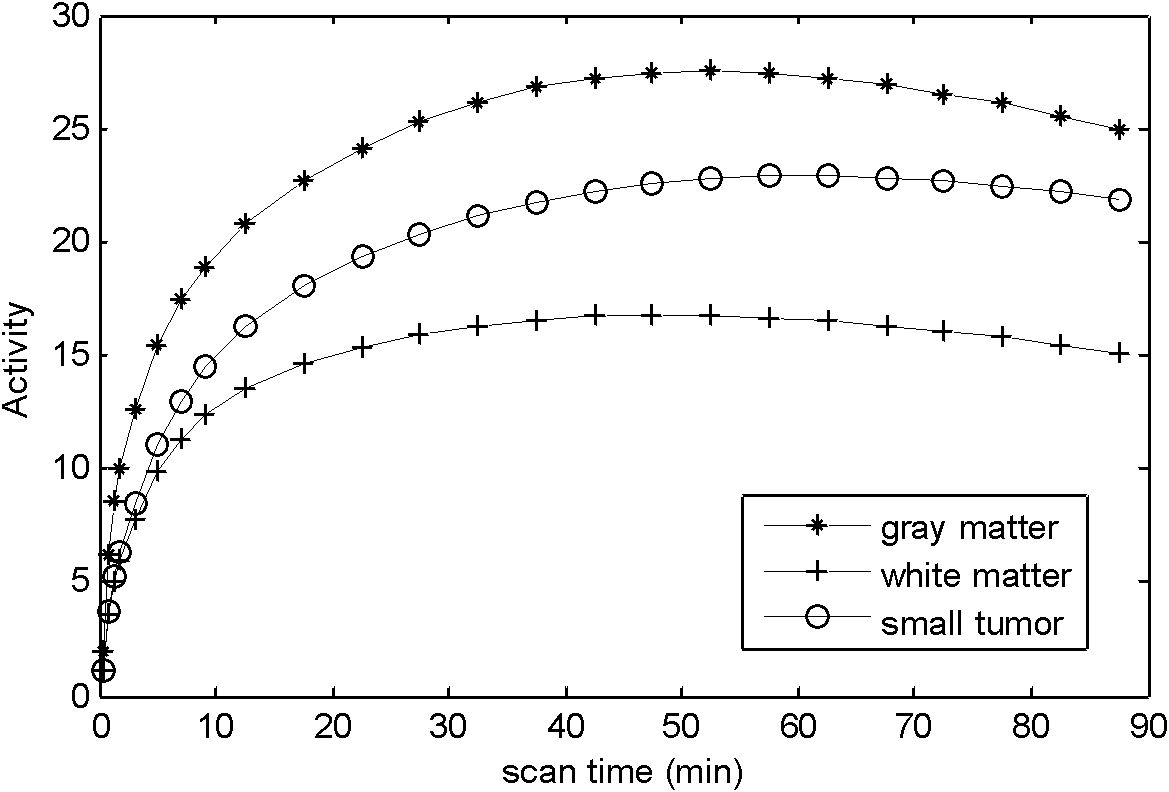Regional spatial-temporal prior-based dynamic PET reconstruction method
A space-time and regional technology, applied in the field of image reconstruction of medical imaging, can solve problems such as complex optimization algorithms, long calculation time, and difficulty in meeting clinical requirements, and achieve the effect of improving accuracy and signal-to-noise ratio
- Summary
- Abstract
- Description
- Claims
- Application Information
AI Technical Summary
Problems solved by technology
Method used
Image
Examples
Embodiment Construction
[0028] The specific implementation steps of the dynamic PET reconstruction method based on regional spatiotemporal prior of the present invention are as follows: figure 1 As shown, the details are as follows:
[0029] 1. Using PET equipment to collect dynamic projection data, the dynamic collection time period is 4×0.5min, 4×2min, 16×5min, a total of 24 time frames.
[0030] 2. Direct traditional FBP (Filter back-projection, FBP, filtered back-projection) reconstruction of the acquired dynamic projection data, FBP reconstruction uses a Hanning (Hanning) window with a cutoff frequency of 80% Nyquist (Nyquist) frequency, Generate an initial dynamic image.
[0031] 3. Extract the mean TAC corresponding to each region of interest (ROI) from the acquired initial dynamic image, where the ROI is determined by a small neighborhood of 3×3 pixels. The above mean TAC is expressed in vector form as Where t is the number of time frames, a total of T frames, is the pixel mean value of...
PUM
 Login to View More
Login to View More Abstract
Description
Claims
Application Information
 Login to View More
Login to View More - R&D
- Intellectual Property
- Life Sciences
- Materials
- Tech Scout
- Unparalleled Data Quality
- Higher Quality Content
- 60% Fewer Hallucinations
Browse by: Latest US Patents, China's latest patents, Technical Efficacy Thesaurus, Application Domain, Technology Topic, Popular Technical Reports.
© 2025 PatSnap. All rights reserved.Legal|Privacy policy|Modern Slavery Act Transparency Statement|Sitemap|About US| Contact US: help@patsnap.com



